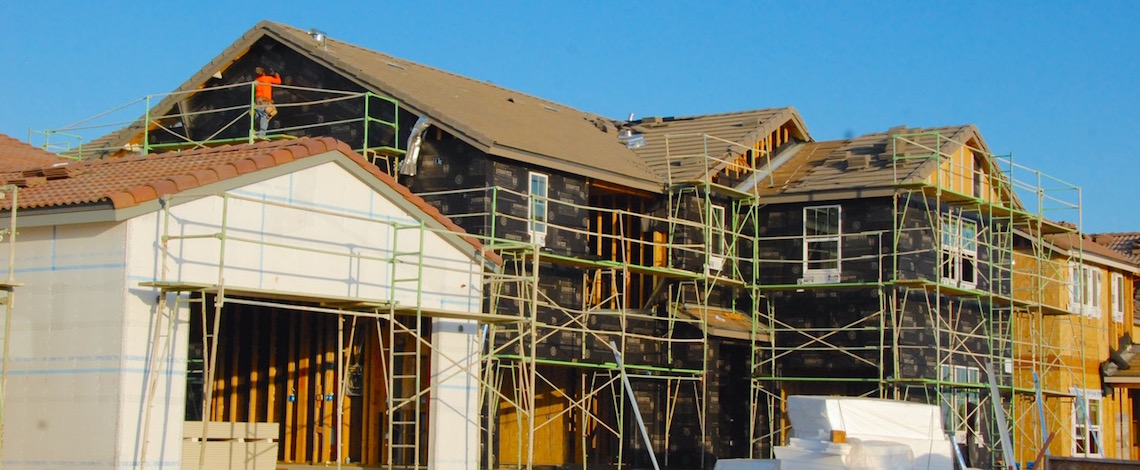
File Photo.
As part of an effort to meet California’s environmental goals, there has been a push to jolt the energy sources we currently use.
In 2018, California passed a law that will require it to derive 100% of its power from zero-carbon energy sources by 2045.
Some cities in the state are even trying to meet goals ahead of schedule. San Luis Obispo’s City Council voted 4-1 on an energy policy in September that would mandate constructing buildings with all electric power, or retrofitting gas power buildings to electric ones. The council delayed a second vote to make official the measure due to a potential conflict of interest.
In July, Berkeley became the first city in the U.S. to ban natural, fossil gas hook-ups in new buildings, with the ordinance going into effect on Jan. 1, 2020.
The California Public Utilities Commission (CPUC) is implementing SB 1477, signed by former Gov. Jerry Brown in 2018, which directs the commission to create two new programs to promote the use of highly efficient building appliances.
The BUILD and TECH programs offer incentives for utility customers to invest in new low carbon-emitting building technologies. The programs do not include mandates to dismantle or diminish California’s existing natural gas pipeline infrastructure.
According to an April 2019 study by the Energy and Environmental Economics, Inc., an energy consulting firm, “building electrification… can lead to consumer capital cost savings, bills savings, and lifecycle savings in many circumstances.”
Building costs
Countering this is a 2018 study from the California Building Industry Association (CBIA) finding that homes with natural gas appliances could cost $7,200 to upgrade wiring and electrical panels to purchase new appliances, $877 per household each year in increased energy costs and an overall cost increase of $4.3 to $6.1 billion per year.
Mike Prandini, president and CEO for the Building Industry Association (BIA) of Fresno/Madera Counties, said what hears from member homebuilders is that they don’t want to build electric because their customers don’t want electric.
“They prefer gas.” Prandini said. “Gas is easier to use, easier to control and works more efficiently in terms of cooking food. Restaurants would be decimated with electric, and terribly impacted.”
Prandini also said that it is much more efficient to heat a home with gas than with electricity, which would consume more energy, and that those without a solar power system in their homes “would be in a tough spot.”
“When you require solar, you’re adding to the price of the house, and that’s ok. If you’re building a half a million dollar home — another $20,000 or $30,000 is no big deal. But when you get down to the entry level homes, $30,000 is a huge amount, so it’s a huge challenge to provide affordable housing with all these extra energy requirements on homes,” Prandini said.
Natural gas is relatively clean, Prandini said, adding that consumers should have all available energy sources as an option.
Brandon De Young, executive vice president of De Young Properties, said he isn’t surprised by this legislation, as the company is already focused on building Zero Energy Homes, which are designed to produce as much clean energy as they consume in a year. But he found that a lot of people are still not attracted to electric kitchens.
“Not every chef or cook or homeowner wants electric cooking. I believe that the only reason why is because there is a disconnect in consumer education with what electric cooking actually is,” De Young said. “Over years, with people realizing that there is a different kind of electric cooking out there, and we can just power it all with the sun, more people will select it as an option.”
He noted induction electric cooking, which essentially heats up the pot or pan and not the stovetop surface, eliminating the danger of a hot surface.
A shock to communities
The Greenlining Institute, a non-profit organization that works for racial and economic justice through environmental policies, health care and other aspects, released a report at the end of September, “Equitable Building Electrification: A framework for Powering Resilient Communities,” that highlights benefits of moving away from gas in buildings for low-income residents.
The report uses the Public Utility Commission’s (PUC) San Joaquin Valley Disadvantaged Communities Pilot Project, a program that allowed communities that have never had access to gas infrastructure to work with an on-the-ground team to identify alternatives that would best suit residents, as an example of what community driven policy making can do.
“The programs that support building electrification, coupled with things like energy efficiency and solar, are reducing energy insecurity and making sure that clean energy is affordable for everybody,” said Carmelita Miller, legal counsel at The Greenlining Institute.
Miller, who co-authored the report, said that more than 170 communities in the San Joaquin Valley could potentially make the switch from fossil fuel sources to electrification. She went on to say that those communities had been redlined from accessing natural gas for decades.
Miller admits that there will be initial upfront costs in transitioning from gas to electric, but lower-income communities need help, and through pilot programs, she hopes that such efforts will encourage policy makers and drive environmental groups to the front of these conversations.
Cleaning it up
George Minter, regional vice president of external affairs and environmental policy for SoCalGas, the nation’s largest natural gas distribution utility serving 22 million customers across the state, said the utility is planning to replace 20% of its traditional natural gas supply with renewable natural gas by 2030 to fulfill its vision of being the cleanest natural gas provider in North America.
Though there is no policy from the state to electrify buildings or move to electricity, but instead focus on de-carbonization of energy use, Minter said there is a debate on the best way to do it.
Minter said that the push for electrification is based on a confidence that the state can build lots of solar and wind energy systems and decarbonize the electricity system, but that renewable natural gasses are just as viable an option that will help us meet the state’s goals faster and cheaper.
“We’ve got 22 million people, 90% of them rely on gas everyday, and requiring them to change out appliances just doesn’t make sense,” Minter said. “Consumer studies tell us that people don’t want to do that—2/3rds of people oppose a natural gas ban and want it as an energy option. We have a strong consumer preference.”
The Business Journal corrected this story to reflect that the vote on the energy policy in San Luis Obispo had been delayed.








